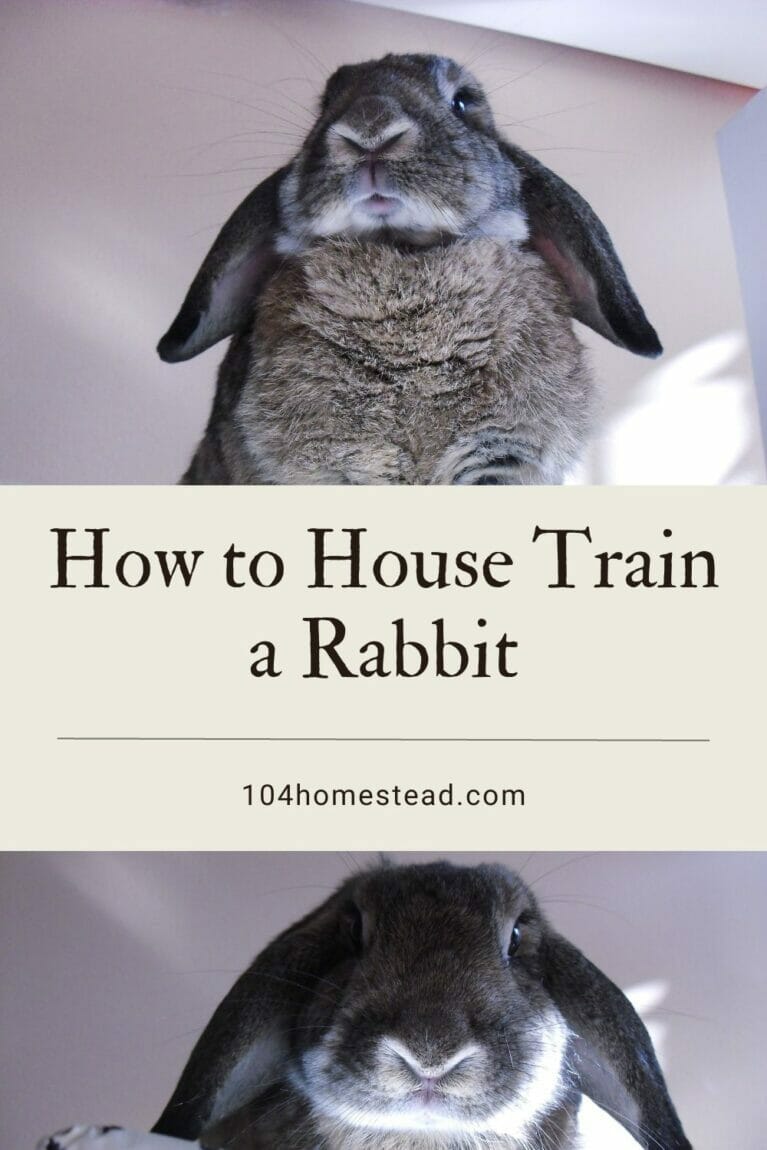How to House-Train A Rabbit: A Simple 4-Step Guide
Rabbits make wonderful indoor companions in part because you can house-train a rabbit, just like cats! Often in just a day or two!
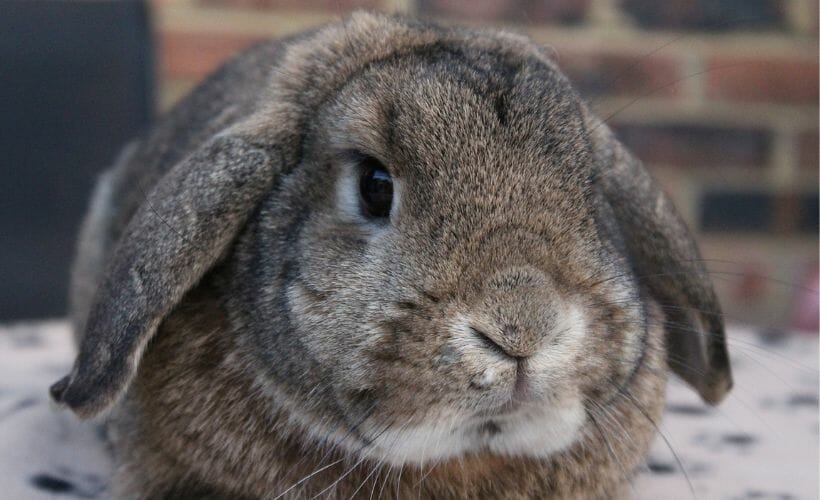
We have had a wide variety of rabbits on our homestead over the years for several different purposes. The outdoor rabbits didn’t require potty training, but the angora rabbits, Guster and Pistachio, and our house bunny, Mister Bo Jangles, did. The angoras taught me a lot about choosing the right litter for your rabbit. Bo is a little less high-maintenance. He just requires a heavy litter that doesn’t go flying when he gets the zoomies.
Before you begin house training your rabbit…
I’m going to start with a topic that may be a little touchy for some. Intact rabbits, especially males, are much harder to house-train because they tend to spray to mark their territory. Unless you are breeding your rabbits, please spay or neuter them.
You’ll also want to make sure your bunny is mature enough for potty training. They are generally ready between 4 and 6 months of age. If you adopted an older bunny, fear not, you can teach an old bun new tricks.
Lastly, you want to have a good rapport with your rabbit before you begin the process of litter box training. If your bunny is new, start with some fun training and tricks for a few weeks before continuing.
Supplies you need to house-train a rabbit
Litter Pan(s)
Many people have success with standard, cheap cat litter pans or larger corner pans for ferrets. Those worked just fine with our fiber rabbits, but they lived in a mudroom. Bo lives in our living room and my tolerance for poop being shot across the room every time he launches himself out of his condo is low, so he needs higher sides on his box.
We switched to a high-rimmed litter box for cats and that worked much better. Now he has a custom-designed high-rimmed box that fits perfectly in his wire panel condo.
VIDEO COMING SOON — I PROMISE
Litter
If you have angoras, please read this. In summary, I used the CareFresh Small Animal Litter which is touted all over the internet as the best stuff since sliced bread for rabbits, and it might be… if you don’t have a fiber rabbit. Yesterday’s News also seems to be popular but didn’t work with our angoras.
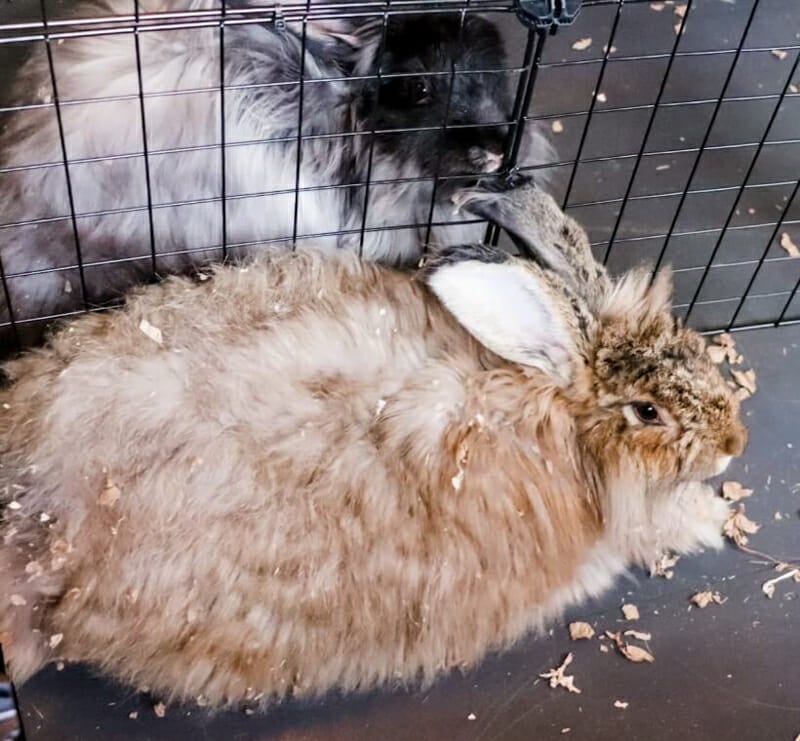
If you don’t have a fiber rabbit, the world is your oyster. You need to pick something that is super absorbent, safe, and does not cause impaction. If it can be composted, well that’s just gravy. Organic litters are often compost-safe. Do not use clay or clumping litter as this is harmful to rabbits’ respiratory systems. Beyond those requirements, it’s a personal choice. As I said earlier, I prefer something with some weight to it because otherwise, our house rabbit ends up flinging it all over the place when he zoomies.
I personally use pelleted pine or Fresh News Recycled Paper Bedding (not to be confused with CareFresh). Fresh News and are pelletized.
You will need at least one litter pan for the cage area and possibly more depending on how centrally your cage is located and how far your bunny is allowed to roam. It’s best to start with too many and slowly scale back.
You may want to contain your free-range rabbit in an exercise pen for a few days if you want him to have freedom beyond his cage, but not the entire house.
Hay
Every rabbit has unique hay needs that are conditional upon age, breed, and general health. The Rabbit House has a great article on choosing the right hay for your bunny. We use primarily timothy hay and supplement with others.
Regardless of which hay you’re choosing, you need plenty of it.
How to House-Train a Rabbit in 4 Steps
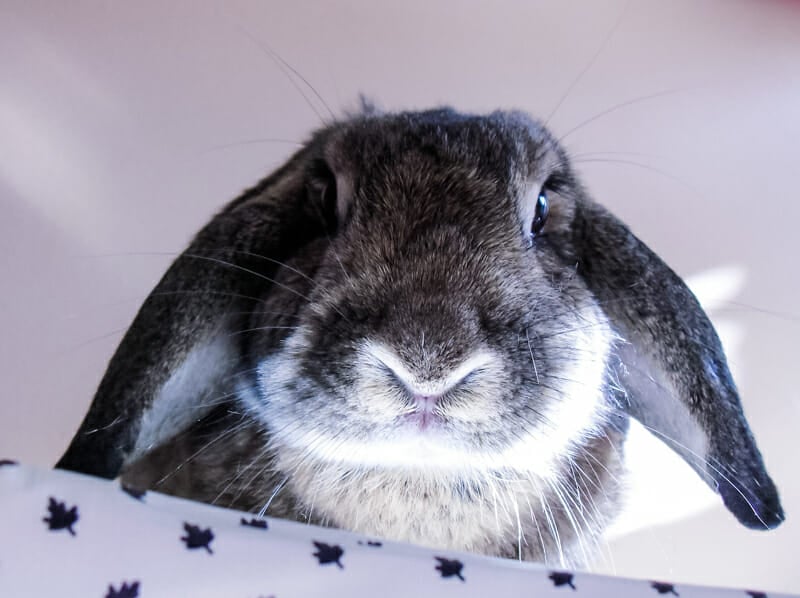
Step 1: Prepare the Rabbit Litter Box
While in the training phase, it’s wise to put something under the litter box to protect the floor. I use puppy piddle pads, but you can use some sheet plastic, a plastic mat, or old towels if you prefer. You may prefer to always keep something under your rabbit’s favorite box just because even well-trained rabbits sometimes have accidents.
Fill your box with 2-3″ of litter. I find the depth can be as little as an inch of litter with more fibrous options. Pellets need to be a bit deeper.
Then comes the hay. You can spread hay over the litter or you can feed hay out of a hay rack on one side of the box. More in step 2.
Step 2: Use Food to Bribe & Encourage Toileting
So rabbits have this habit to poo while they munch. That’s why we place hay in or over the litter box. You want to make sure your rabbit can only access hay if they’re in the litter box.
You may prefer to have the hay in a nice tidy clump on one side of the box, but your rabbit will do what it wants. Bo prefers a less tidy box and typically builds a hay moat and he acts like a castle in the middle. Whatever keeps him in the box is fine.
Step 3: Reinforce Success
If your bunny goes once or twice outside the box, use a paper towel to clean up the rabbit poops and absorb the fluid, then put that paper towel in the box. That will reinforce where you want your rabbit to go. Make sure you clean up the soiled area with an enzyme cleaner to eliminate the odor that might encourage a repeat offense.
If your bunny repeatedly goes outside the box in a specific area (often a corner), this is a sign your rabbit prefers that location. You can try to fight it, but you may need to accept that is where the litter box is better located.
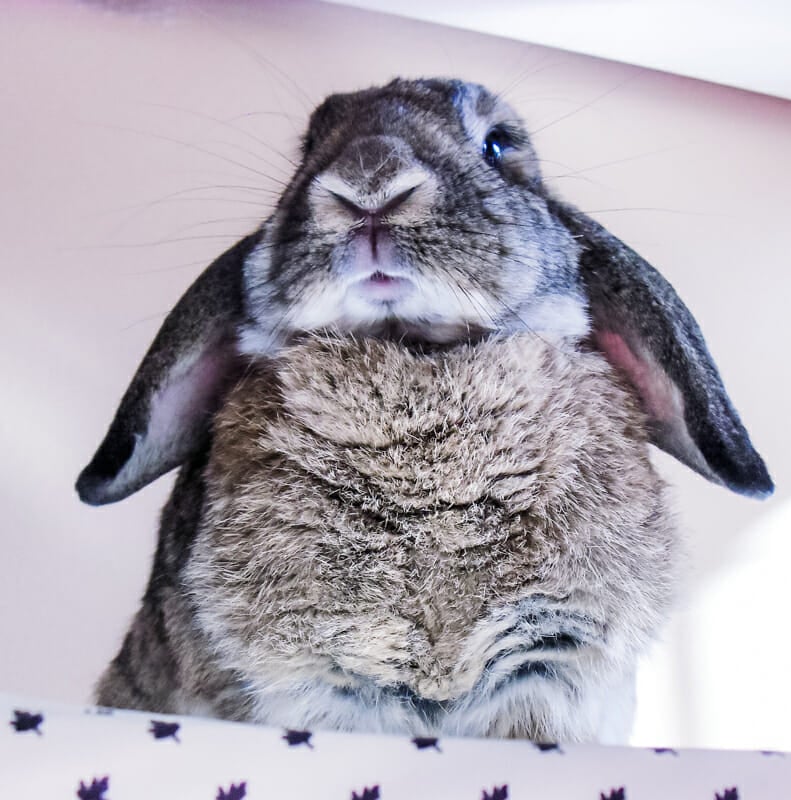
The important thing to remember is rabbits do well with positive reinforcement, so instead of punishing bad habits, treat your bunny friend when they get it right.
Step 4: Learn Your Rabbit’s Body Language
Learn your rabbit’s “I’m about to use the bathroom” behavior. If you see your rabbit acting like it needs to go to the bathroom, you can move it to the litter box (if your rabbit is comfortable being handled) and contain it until it’s done.
Messes are going to happen before these good habits are established. Patience is key. If your rabbit isn’t getting it or showing progress after a week, it may be wise to visit your vet to make sure there isn’t a urinary tract issue.
Frequently Asked Questions About House Training Rabbits
If you’ve found value in this blog post and enjoyed reading it, why not share it with your Pinterest community? Pin the image below and spread the love!
